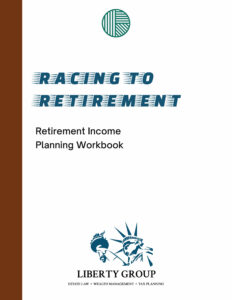Advantages and Disadvantages of a Living Trust
Join estate planning attorney Thomas Binetter of Hollander & Hollander, PC as he discusses the pros and cons of living trusts. Learn how a living trust can help you bypass probate, maintain privacy, and provide flexibility in managing your assets. Find out why it’s essential to consider the cost, complexity, funding, and asset sale aspects before deciding if a living trust is right for you.
Advantages
- One of the key advantages of a living trust is bypassing probate.
Probate is a process where your beneficiaries have to go to court to ask permission to transfer your assets into their names after you pass. The problem with probate is that it is an extremely lengthy and expensive process, sometimes taking up to two years and costing $100,000 or even more. By utilizing a living trust, you can help your loved ones avoid this process completely and ensure that they receive your assets exactly how you want them to. Unlike wills, which are public documents, living trusts offer more privacy since they are not part of the public record. When a will is probated, it is open to public scrutiny. That includes scrutiny of all your assets. For those who value privacy in their affairs, a living trust is essential to your estate planning. - Another key advantage of a living trust is protection from potential challenges.
Living trusts can provide a greater level of protection from challenges to your estate from the world at large. With probate, notice is required to be given to the public, which includes your extended family. This can invite challenges that might not be forthcoming otherwise with a living trust. - Flexibility is another key advantage to a living trust. A revocable living trust allows you to make changes to your trust as your circumstances or your preferences evolve. This flexibility ensures that your estate plan remains up to date and aligned with your testamentary intentions. Control distributions is another advantage to a living trust. Living trusts allow you to set up a distribution plan that spans across generations, promoting the personal development, independence, and responsibility of your beneficiaries. This approach can help avoid potential negative consequences that may arise from a mass transfer of assets.
- Last but not least, another key advantage of an estate plan and a living trust, incapacity planning.
By appointing a successor trustee in your living trust, you ensure that someone that you trust can step in and manage your affairs if you become incapacitated. This can alleviate the need for court involvement in handling your estate at a crucial time.
Disadvantages
There are also some fundamental disadvantages with creating a living trust.
- The first one, the cost and the complexity.
Creating a living trust typically requires employing the assistance of an estate planning attorney like myself. Attorney fees can vary depending on the complexity of your estate. But the investment is extremely worthwhile to ensure that your trust is set up correctly. - Another disadvantage of creating a living trust, funding the trust.
To fully utilize a living trust you need to transfer the ownership of your assets into the name of the trust. This process, known as funding, requires updating the titles and registration of your assets. While an attorney can help with the process, it may also involve some effort on your part. - Another disadvantage of a living trust, selling your assets.
If you have assets within your living trust that you wish to sell, you need to sell them from the trust before the process of sale is completed. This additional step can be inconvenient, but it’s often outweighed by the overall benefits of a living trust.
These are the advantages and disadvantages of a living trust. We hope this information has been helpful in shedding some light on what is an important estate planning tool. Remember, estate planning is a personal and complex matter. So, it’s essential to seek out professional advice tailored to your specific needs.

